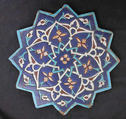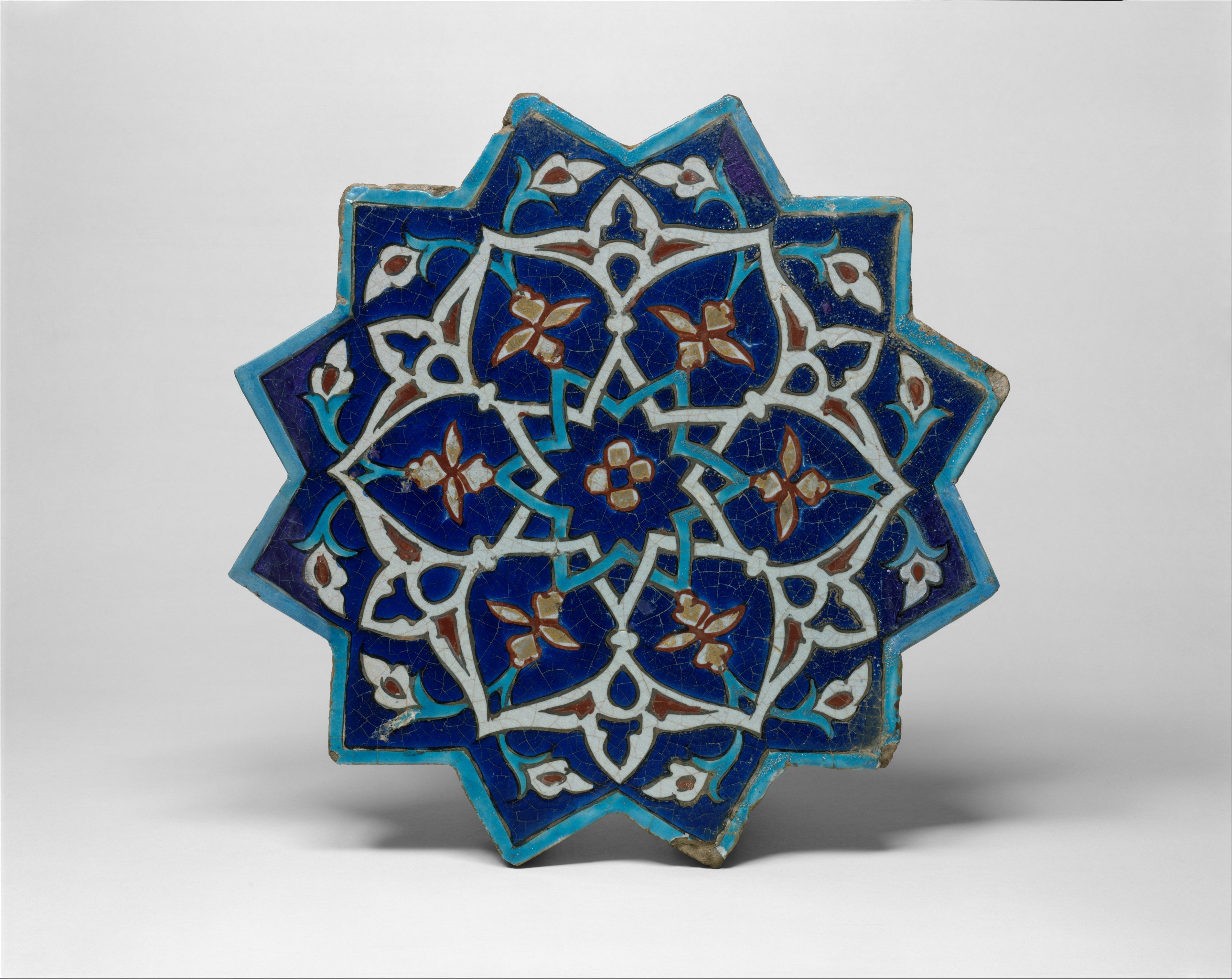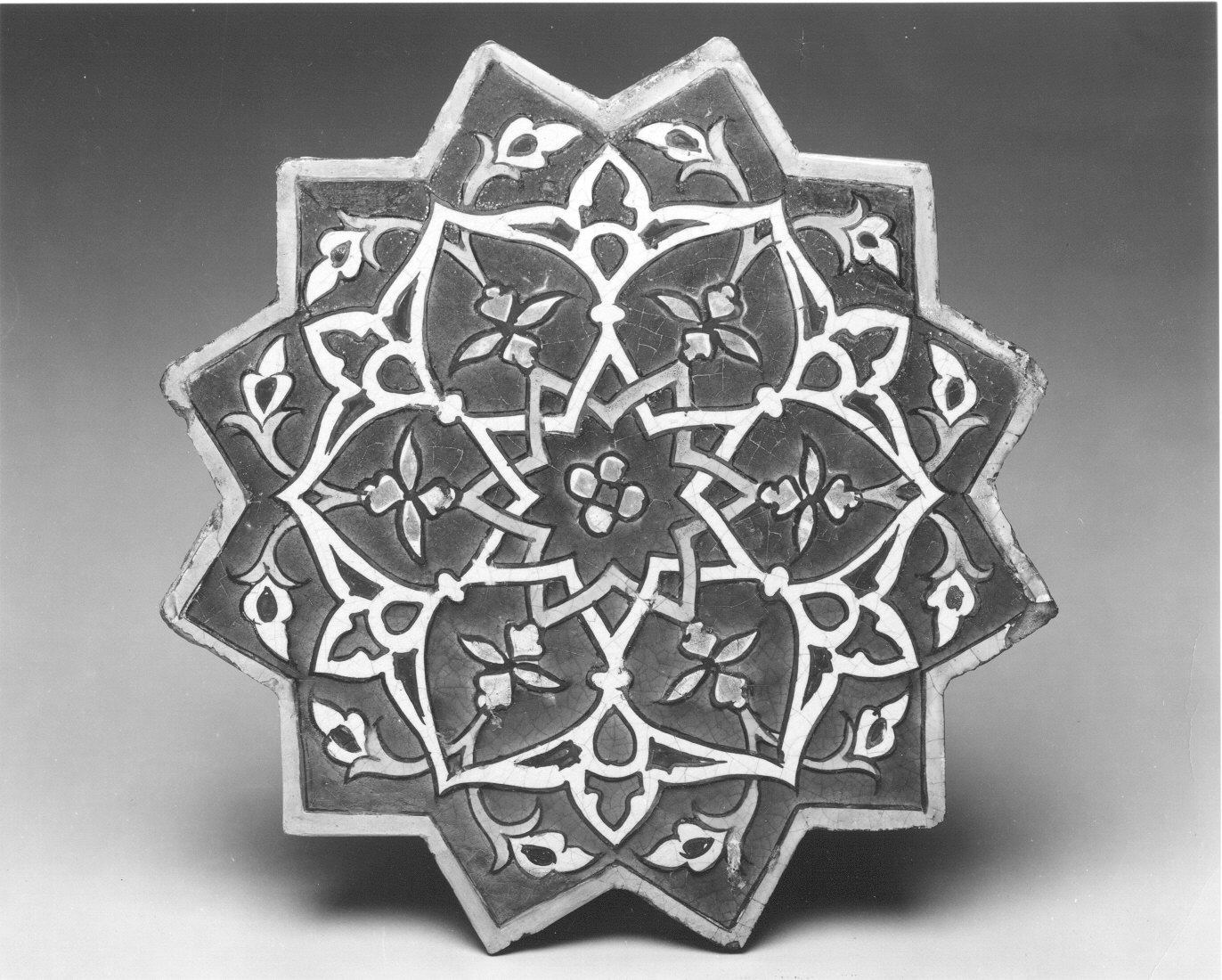Twelve-Pointed Star-Shaped Tile
This star‑shaped tile with interlaced design once graced the walls of the west iwan (vault) of the Madrasa al-Ghiyäthiyya, a religious school completed in 846/1442–43 in the city of Khargird in northeastern Iran. This example was executed in the so‑called cuerda seca (dry cord) technique wherein a greasy material separates the various colored glazes. During the firing process, the greasy line melts, leaving behind an unglazed band between the glazed areas.
#6711. Star-shaped Tile
Due to rights restrictions, this image cannot be enlarged, viewed at full screen, or downloaded.
This artwork is meant to be viewed from right to left. Scroll left to view more.




